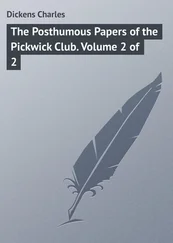Hubert Bancroft - The Native Races [of the Pacific states], Volume 5, Primitive History
Здесь есть возможность читать онлайн «Hubert Bancroft - The Native Races [of the Pacific states], Volume 5, Primitive History» — ознакомительный отрывок электронной книги совершенно бесплатно, а после прочтения отрывка купить полную версию. В некоторых случаях можно слушать аудио, скачать через торрент в формате fb2 и присутствует краткое содержание. Жанр: foreign_antique, foreign_prose, на английском языке. Описание произведения, (предисловие) а так же отзывы посетителей доступны на портале библиотеки ЛибКат.
- Название:The Native Races [of the Pacific states], Volume 5, Primitive History
- Автор:
- Жанр:
- Год:неизвестен
- ISBN:нет данных
- Рейтинг книги:5 / 5. Голосов: 1
-
Избранное:Добавить в избранное
- Отзывы:
-
Ваша оценка:
- 100
- 1
- 2
- 3
- 4
- 5
The Native Races [of the Pacific states], Volume 5, Primitive History: краткое содержание, описание и аннотация
Предлагаем к чтению аннотацию, описание, краткое содержание или предисловие (зависит от того, что написал сам автор книги «The Native Races [of the Pacific states], Volume 5, Primitive History»). Если вы не нашли необходимую информацию о книге — напишите в комментариях, мы постараемся отыскать её.
The Native Races [of the Pacific states], Volume 5, Primitive History — читать онлайн ознакомительный отрывок
Ниже представлен текст книги, разбитый по страницам. Система сохранения места последней прочитанной страницы, позволяет с удобством читать онлайн бесплатно книгу «The Native Races [of the Pacific states], Volume 5, Primitive History», без необходимости каждый раз заново искать на чём Вы остановились. Поставьте закладку, и сможете в любой момент перейти на страницу, на которой закончили чтение.
Интервал:
Закладка:
146
Cabrera , Teatro , in Rio's Description , pp. 47-53. It seems that the supposed Phœnician descent of the Americans has served as an excuse for the tyranny their conquerors exercised over them. 'Cursed be Canaan!' said Noah, 'A servant of servants shall he be unto his brethren.' Montanus says that it is a mistake to term the Phœnicians descendants of Canaan, for they are a Semitic people. Nieuwe Weereld , p. 25.
147
'The strong Galleys, with sails and oars, and always before the constant East-Wind and onward wave-current, would accomplish ten miles an hour by day, and during the night, without the Rowers, six miles an hour, and, equally dividing the twenty-four hours, would make a run of 192 miles per day. Nautical proofs will show that in the above calculation the power of the Trade-Winds [ i. e. the East-Winds] are underrated . The distance from Teneriffe to Florida is about 3300 miles, which by the foregone data they would traverse in seventeen and a quarter days. The Voyage may therefore with safety be said to have been accomplished during an entire month, and that, consequently the first landing of a branch of the human family in Ancient America would be in the last month of Autumn, three hundred and thirty-two years before the Christian Æra.'
148
It would be impossible to give here the entire evidence with which Mr Jones supports his theory. Suffice it to say that the analogies he adduces are far-fetched in the extreme, and that his premises are to a great extent grounded upon certain vague utterances of Isaiah the prophet. His unbounded dogmatism, were it less strongly marked, would render his work offensive and unreadable to those who disagree with his opinions; as it is, it is simply ludicrous. I cannot better express my opinion of the book than by using the words of the distinguished Américaniste Dr Müller: 'Ganz ohne Werth soll die in London 1843 erschienene Schrift eines Engländers, George Jonas, über die Urgeschichte des alten America sein.' Amerikanische Urreligionen , p. 3.
149
Jones' Hist. Anc. Amer. , pp. 168-72.
150
According to Mr Jones, Solomon's temple was built by Tyrian workmen.
151
Gebelin affirms enthusiastically: '"que cette inscription vient d'arriver tout exprès du nouveau monde, pour confirmer ses idées sur l'origine des peuples, et que l'on y voit, d'une manière évidente , un monument phénicien, un tableau qui, sur le devant, désigne une alliance entre les peuples américains et la nation étrangère, arrivant, par des vents du nord , d'un pays riche et industrieux."' Humboldt, however, commenting upon this, writes: 'J'ai examiné avec soin les quatre dessins de la fameuse pierre de Taunton River… Loin d'y reconnoître un arrangement symétrique de lettres simples ou de caractères syllabiques, je n'y vois qu'un dessin à peine ébauché, et analogue à ceux que l'on a trouvés sur les rochers de la Norwège.' Vues , tom. i., pp. 181-2. 'The history of this inscription is scarcely surpassed, in the interest it has excited, or the novel phases it has exhibited at successive epochs of theoretical speculation, by any Perusinian, Eugubine, or Nilotic riddle. When the taste of American antiquaries inclined towards Phœnician relics, the Dighton inscription conformed to their opinions; and with changing tastes it has proved equally compliant. In 1783 the Rev. Ezra Stiles, D.D., President of Yale College, when preaching before the Governor and State of Connecticut, appealed to the Dighton Rock, graven, as he believed, in the old Punic or Phœnician character and language: in proof that the Indians were of the accursed seed of Canaan, and were to be displaced and rooted out by the European descendants of Japhet!.. So early as 1680 Dr. Danforth executed what he characterized as "a faithful and accurate representation of the inscription" on Dighton Rock. In 1712 the celebrated Dr. Cotton Mather procured drawings of the same, and transmitted them to the Secretary of the Royal Society of London, with a description, printed in the Philosophical Transactions for 1741, referring to it as "an inscription in which are seven or eight lines, about seven or eight feet long, and about a foot wide, each of them engraven with unaccountable characters, not like any known character ." In 1730, Dr. Isaac Greenwood, Hollisian Professor at Cambridge, New England, communicated to the Society of Antiquaries of London a drawing of the same inscription, accompanied with a description which proves the great care with which his copy was executed. In 1768, Mr. Stephen Sewall, Professor of Oriental Languages at Cambridge, New England, took a careful copy, the size of the original, and deposited it in the Museum of Harvard University; and a transcript of this was forwarded to the Royal Society of London, six years later, by Mr. James Winthrop, Hollisian Professor of Mathematics. In 1786 the Rev. Michael Lort, D.D., one of the Vice-Presidents of the Society of Antiquaries of London, again brought the subject, with all its accumulated illustrations, before that learned society; and Colonel Vallency undertook to prove that the inscription was neither Phœnician nor Punic, but Siberian. Subsequently, Judge Winthrops executed a drawing in 1788; and again we have others by Judge Baylies and Mr. Joseph Gooding in 1790, by Mr. Job Gardner in 1812; and finally, in 1830, by a Commission appointed by the Rhode Island Historical Society, and communicated to the Antiquaries of Copenhagen with elaborate descriptions: which duly appear in their Antiquitates Americanæ , in proof of novel and very remarkable deductions.' Wilson's Prehist. Man , pp. 403-5. See also Pidgeon's Trad. , p. 20.
152
'Il est assez remarquable que, sur sept caractères, aucun ne s'y trouve répété plusieurs fois.' Vues , tom. i., pp. 183-4, with cut of part of inscription.
153
See Schoolcraft , in Amer. Ethno. Soc., Transact. , vol. i., pp. 386-97, for full account of this stone, with cuts. See also Wilson's Prehist. Man , pp. 408, et seq.
154
For this statement I have only newspaper authority, however. 'Die "Amerika," ein in Bogota, Neu Granada, erschienenes Journal, kündigt eine Entdeckung an, die so seltsam ist, dass sie der Bestätigung bedarf, ehe man ihr Glauben schenken kann. Don Joaquim de Costa soll danach auf einem seiner Güter ein steinernes Monument entdeckt haben, das von einer kleinen Colonie Phönizier aus Sidonia im Jahre 9 oder 10 der Regierung Hiranus, eines Zeitgenossen Salomons, ungefähr zehn Jahrhunderte vor der christlichen Aera errichtet wurde. Der Block hat eine Inschrift von acht Linien, die in schönen Buchstaben, aber ohne Trennung der Worte oder Punctation geschrieben sind. In der Uebersetzung soll die Inschrift besagen, dass jene Männer des Landes Canarien sich im Hafen Apiongaber (Bay-Akubal) einschifften und nach zwölfmonatiger Fahrt von dem Lande Egypten (Afrika) durch Strömungen fortgeführt, in Guayaquil in Peru landeten. Der Stein soll, wie es heisst, die Namen der Reisenden tragen.' Hamburg Reform , Oct. 24, 1873. See farther, concerning inscriptions: Torquemada , Monarq. Ind. , tom. i., p. 29; Stratton's Mound-Builders , MS., p. 13; Priest's Amer. Antiq. , p. 121.
155
See particularly Melgar , in Soc. Mex. Geog., Boletin , 2da época, tom. iii., p. 112, et seq.; and Jones' Hist. Anc. Amer. , p. 154, et seq.; Baldwin's Anc. Amer. , pp. 185-6.
Читать дальшеИнтервал:
Закладка:
Похожие книги на «The Native Races [of the Pacific states], Volume 5, Primitive History»
Представляем Вашему вниманию похожие книги на «The Native Races [of the Pacific states], Volume 5, Primitive History» списком для выбора. Мы отобрали схожую по названию и смыслу литературу в надежде предоставить читателям больше вариантов отыскать новые, интересные, ещё непрочитанные произведения.
Обсуждение, отзывы о книге «The Native Races [of the Pacific states], Volume 5, Primitive History» и просто собственные мнения читателей. Оставьте ваши комментарии, напишите, что Вы думаете о произведении, его смысле или главных героях. Укажите что конкретно понравилось, а что нет, и почему Вы так считаете.
![Hubert Bancroft The Native Races [of the Pacific states], Volume 5, Primitive History обложка книги](/books/749157/hubert-bancroft-the-native-races-of-the-pacific-s-cover.webp)
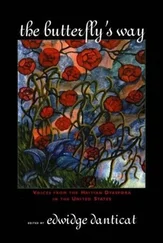
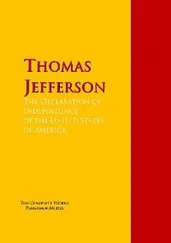
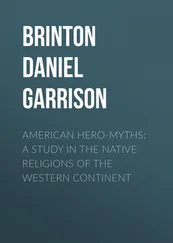

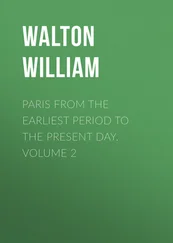


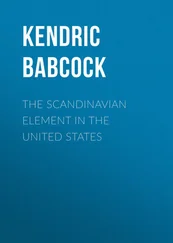
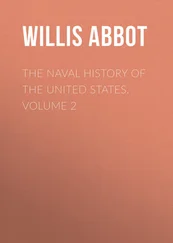
![Hubert Bancroft - The Native Races [of the Pacific states], Volume 1, Wild Tribes](/books/750126/hubert-bancroft-the-native-races-of-the-pacific-s-thumb.webp)
